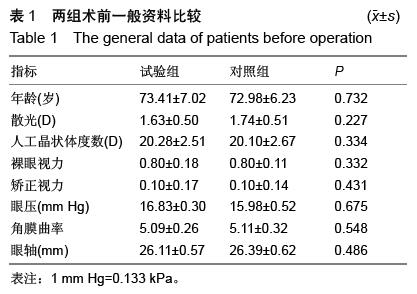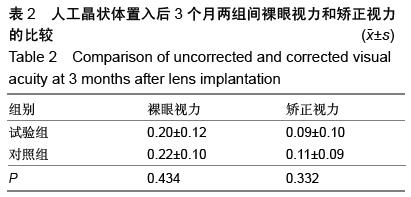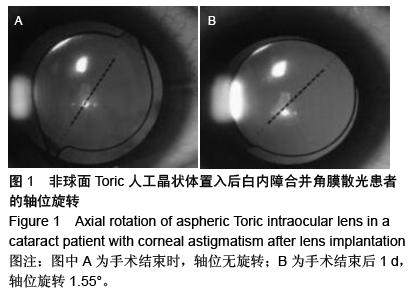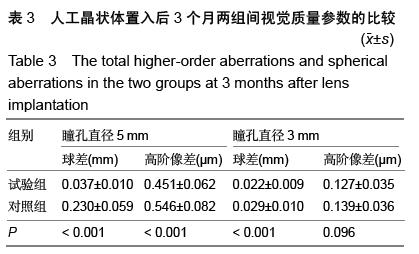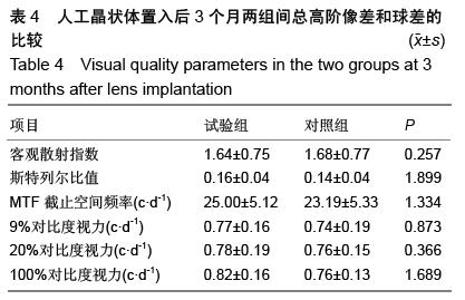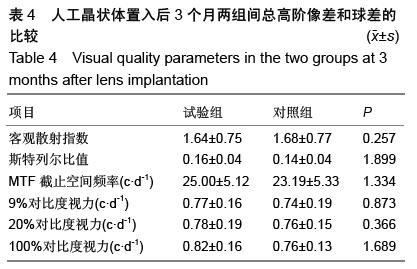| [1] Rabiu MM,Jenf M,Fituri S,et al.Prevalence and causes of visual impairment and blindness, cataract surgical coverage and outcomes of cataract surgery in Libya.Ophthalmic Epidemiol. 2013;20(1):26-32.
[2] Trivedy J.Outcomes of high volume cataract surgeries at a Lions Sight First Eye Hospital in Kenya.Nepal J Ophthalmol. 2011;3(1):31-38.
[3] Grzybowski A,Ascaso FJ.Sushruta in 600 B.C. introduced extraocular expulsion of lens material. Acta Ophthalmol. 2014;92(2):194-197.
[4] Briszi A,Prahs P,Hillenkamp J,et al.Complication rate and risk factors for intraoperative complications in resident-performed phacoemulsificationsurgery. Graefes Arch Clin Exp Ophthalmol.2012;250 (9): 1315-1320.
[5] Ang M,Evans JR,Mehta JS.Manual small incision cataract surgery (MSICS) with posterior chamber intraocular lens versus extracapsular cataract extraction (ECCE) with posterior chamber intraocular lens for age -related cataract.Cochrane Database Syst Rev.2012;18(4):CD008811.
[6] Calladine D,Evans JR,Shah S,et al.Multifocal versus monofocal intraocular lenses after cataract extraction.Cochrane Database Syst Rev. 2012;12(9): 3169.
[7] Aghaji AE,Natchiar G.Structured extracapsular cataract extraction -intraocular lens microsurgical training: report of a trainee's experience. Niger J Clin Pract. 2011;14(1):70-73.
[8] Ari S,Cingü AK,Sahin A,et al.The effects of Nd:YAG laser posterior capsulotomy on macular thickness, intraocular pressure, and visual acuity.Ophthalmic Surg Lasers Imaging.2012;43(5):395-400.
[9] Casparis H,Lindsley K,Kuo IC,et al.Surgery for cataracts in people with age-related macular degeneration.Cochrane Database Syst Rev. 2012; 13(6):757.
[10] Moro-Valdezate D,Peiró S,Buch-Villa E,et al.Evolution of Health-Related Quality of Life in Breast Cancer Patients during the First Year of Follow-Up.J Breast Cancer.2013;16(1):104-111.
[11] Haripriya A,Chang DF,Reena M,et al.Complication rates of phacoemulsification and manual small -incision cataract surgery at Aravind Eye Hospital.J Cataract Refract Surg. 2012;38(8):1360-1369.
[12] Muralidhar R,Siddalinga Swamy GS,et al.Completion rates of anterior and posterior continuous curvilinear capsulorrhexis in pediatric cataract surgery for surgery performed by trainee surgeons with the use of a low-cost viscoelastic.Indian J Ophthalmol. 2012; 60(2): 144-146.
[13] Ca a I,Sahin A,Cingü AK,et al.Effect of low molecular weight heparin(enoxaparin) on congenital cataract surgery.Int J Ophthalmol.2012;5(5):596-599.
[14] Chen W,Zuo C,Chen C,et al.Prevalence of corneal astigmatism before cataract surgery in Chinese patients.J Cataract Refract Surg. 2013;39(2): 188-192.
[15] Wolffsohn JS,Bhogal G,Shah S.Effect of uncorrected astigmatism on vision.J Cataract Refract Surg. 2011; 37(3):454-460.
[16] Muftuoglu 0,Dao L,Cavanagh HD,et al.Limbal relaxing incisions at the time of apodized diffractive multifocal intraocular lens implantation to reduce astigmatism with or without subsequent jlaser in situ keratomileusis. Cataract Refract Surg. 2010;36(3): 456-464.
[17] Pisella PJPost-operative residual astigmatism after cataract surgery: Current surgical methods of treatment.J Fr Ophtalmol.2012;35(3):226-228.
[18] Till JS,Yoder Jr PR,Wilcox TK,et al.Toric intraocular lens implantation: 100 consecutive cases.J Cataract Refract Surg.2002;28(2):295-301.
[19] Leyland M,Zinicola E,Bioom P,et al.Prospective evaluation of plate haptic toric intraocular lens.Eye. 2001;15(2):202-205.
[20] Patel C,Ormonde S,Rosen P,et al.Postoperative intraocu1ar lens rotation: a randomised comparison of plate and loop haptic implants.Ophthalmology. 1999;106(11): 2190-2196.
[21] Budo C,Hessloehl JC,Izak ML,et al.Multicenter study of the Artisan phakic intraocular lens.J Cataract Refracti Surg. 2000;26(8):1163-1171.
[22] Tehran M,Schwenn O,Dick HB.Chirurgish astigmatismus and rotationsstabilitat nach implantation der torischen Artisan IOL bei phaken Augen 99.Tagung der DOG.Ophthalmologe. 2001;98(1):173.
[23] Nishi O,Nakai Y,Mizumoto Y,et al.Capsule opacification after refilling the capsule with an inflatable endocapsular balloon.J Cafaract Refract Surg. 1997; 23(10):1548-1555.
[24] 李凤鸣.眼科全书[M].北京:人民卫生出版社1996:356.
[25] 姚克,章征,徐雯,等.不同人工晶状体眼的波阵面像差比较[J].中华眼科杂志,2004,42(5): 387-390.
[26] Amano S,Amano Y,Yamagami S,et al.Age- related changes in corneal and ocular higher-order wavefront aberration.Am J Ophthalmol.2004;137(6):988-992.
[27] Mester U,Dillinger P,Anterist N.Impact of a modified optic design on visual function: Clinical comparative study.J Cataract Refract Surg.2003;29(4):652-653.
[28] Packer M,Fine IH,Hoffman RS,et al.Prospective randomized trial of an anterior surface modified prolate intraocular lens.J Refract Surg.2002;18(6):692-693.
[29] Kershner RM.Retinal image contrast and functional visual performance with aspheric,silicone,and acrylic intraocular lens.J Cataract Refract Surg. 2003;29(9): 1684-1694.
[30] Kim MH,Chung TY,Chung ES. Long-term efficacy and rotational stability of AcrySof toric intraocular lens implantation in cataract surgery.Korean J Ophthalmol. 2010;24(4):207-212.
[31] Koshy JJ,Nishi Y,Hixnschall N,et al.Rotational stability of a single-piece toric acrylic intraocular iens.J Cataract Refract Surg.2010;36(10):1665-1670.
[32] Ahmed N,Rocha G,Slomovic AR,et al.Visual function and patient eerience after bilateral implantation of toric intraocular lenses.J Cataract Refract Surg. 2010;36(4): 609-616.
[33] Holland E,Lane S,Horn JD,et al.The AcrySof Toric intraocular lens in subjects with cataracts and corneal astigmatism: a randomized, subject-masked, parallel-group, 1-year study. Ophthalmology. 2010; 117(11): 2104-2111.
[34] Muftuoglu 0,Prasher P,Chu C,et al.Laser in situ keratomileusis for residual refractive errors after apodized diffractive multifocal intraocular lens implantation.J Cataract Refract Surg. 2009;35(6): 1063-1071.
[35] Leccisotti A.Secondary procedures after presbyopic lens excfaange.J Cataract Refract Surg.2004;30(7): 1461-1465. |

